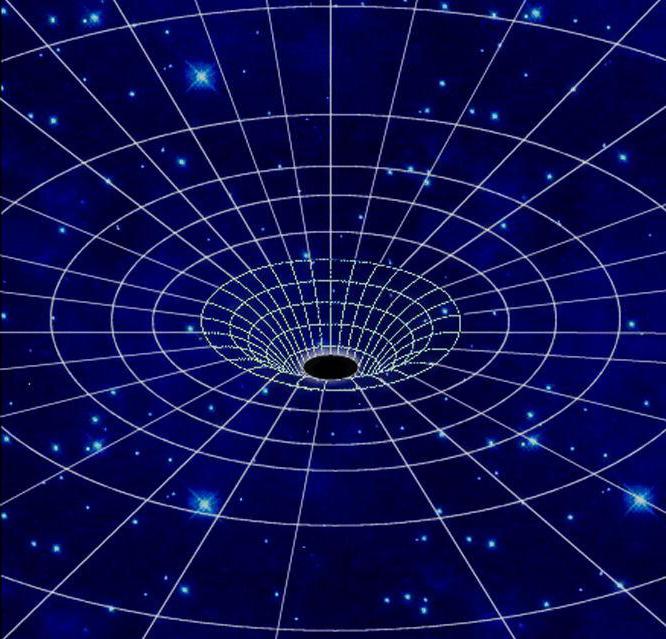This article describes the wave function and its physical meaning. The application of this concept in the framework of the Schrödinger equation is also considered.
Science is on the verge of discovering quantum physics
At the end of the nineteenth century, young people who wanted to connect their lives with science were discouraged from becoming physicists. It was believed that all phenomena are already open and there can be no great breakthroughs in this area. Now, despite the seeming completeness of the knowledge of mankind, no one will dare to speak in this way. Because it happens often: a phenomenon or effect is predicted theoretically, but people lack the technical and technological power to prove or refute them. For example, Einstein predicted gravitational waves more than a hundred years ago, but to prove their existence was possible only a year ago. This also applies to the world of subatomic particles (namely, such a thing as the wave function applies): until scientists realized that the structure of the atom is complex, they did not need to study the behavior of such small objects.
Spectra and photography
The impetus for the development of quantum physics was the development of photography technology. Before the beginning of the twentieth century, capturing images was cumbersome, long and expensive: the camera weighed tens of kilograms, and the models had to stand for half an hour in one pose. In addition, the slightest mistake when handling fragile glass plates coated with a photosensitive emulsion led to an irreversible loss of information. But gradually, the devices became easier, shutter speed less and less fingerprints more perfect. And finally, it became possible to obtain a spectrum of different substances. The questions and inconsistencies that arose in the first theories about the nature of the spectra gave rise to a whole new science. The basis for the mathematical description of the behavior of the microworld is the particle wave function and its Schrödinger equation.
Wave-particle duality
After determining the structure of the atom, the question arose: why does the electron not fall on the nucleus? Indeed, according to Maxwell's equations, any moving charged particle emits, therefore, loses energy. If this were so for electrons in the nucleus, the universe known to us would not exist long. Recall that our goal is the wave function and its statistical meaning.
The ingenious conjecture of scientists came to the rescue: elementary particles are both waves and particles (corpuscles). Their properties are both mass with momentum and wavelength with frequency. In addition, due to the presence of two previously incompatible properties, elementary particles have acquired new characteristics.
One of them is a hard to imagine spin. In the world of smaller particles, quarks, these properties are so many that they are given absolutely incredible names: aroma, color. If the reader meets them in a book on quantum mechanics, let him remember: they are not at all what they seem at first glance. However, how to describe the behavior of such a system, where all the elements have a strange set of properties? The answer is in the next section.
Schrödinger equation
To find the state in which an elementary particle is located (and in a generalized form a quantum system), the Erwin Schrödinger equation allows:
i ħ [(d / dt) Ψ] = Ĥ ψ.
The notation in this ratio is as follows:
- ħ = h / 2 π, where h is the Planck constant.
- Ĥ - Hamiltonian, the operator of the total energy of the system.
- Ψ is the wave function.
By changing the coordinates in which this function is solved, and the conditions in accordance with the type of particle and the field in which it is located, we can obtain the law of behavior of the system under consideration.
Concepts of quantum physics
Let the reader not be seduced by the apparent simplicity of the terms used. Words and phrases such as “operator”, “total energy”, “unit cell” are physical terms. Their values should be clarified separately, and it is better to use textbooks. Further we will give a description and form of the wave function, but this article is of an overview nature. For a deeper understanding of this concept, it is necessary to study the mathematical apparatus at a certain level.
Wave function
Its mathematical expression has the form
| ψ (t)> = ʃ Ψ (x, t) | x> dx.
The wave function of an electron or any other elementary particle is always described by the Greek letter Ψ, therefore it is sometimes called the psi function.
First you need to understand that the function depends on all coordinates and time. That is, Ψ (x, t) is actually Ψ (x 1 , x 2 ... x n , t). An important remark, since the solution of the Schrödinger equation depends on the coordinates.
Further it is necessary to clarify that by | x> we mean the base vector of the selected coordinate system. That is, depending on what exactly needs to be received, the impulse or probability | x> will look like | x 1 , x 2 , ..., x n >. Obviously, n will also depend on the minimum vector basis of the selected system. That is, in an ordinary three-dimensional space n = 3. For the inexperienced reader, we explain that all these icons near the x-indicator are not just a whim, but a specific mathematical action. It will not be possible to understand it without the most complicated mathematical calculations, therefore we sincerely hope that those interested will find out its meaning themselves.
Finally, it is necessary to explain that Ψ (x, t) = <x | ψ (t)>.
The physical nature of the wave function
Despite the basic significance of this quantity, it itself does not have a phenomenon or concept at the base. The physical meaning of the wave function lies in the square of its full modulus. The formula is as follows:
| Ψ (x 1 , x 2 , ..., x n , t) | 2 = ω,
where ω has a probability density value. In the case of discrete spectra (and not continuous), this quantity acquires the value of simply probability.
The consequence of the physical meaning of the wave function
Such physical meaning has far-reaching consequences for the entire quantum world. As it becomes clear from the value of ω, all states of elementary particles acquire a probabilistic hue. The most obvious example is the spatial distribution of electron clouds in orbit around the atomic nucleus.
Let us take two types of hybridization of electrons in atoms with the simplest forms of clouds: s and p. The clouds of the first type are in the shape of a ball. But if the reader remembers from physics textbooks, these electronic clouds are always depicted as a kind of vague cluster of points, and not as a smooth sphere. This means that at a certain distance from the nucleus there is a zone with the highest probability of encountering an s-electron. However, a little closer and a little further this probability is not zero, it just is less. In this case, for p-electrons, the shape of the electron cloud is depicted as a somewhat vague dumbbell. That is, there is a rather complex surface on which the probability of finding an electron is the highest. But even close to this “dumbbell”, both further and closer to the core, this probability is not equal to zero.
Normalization of the wave function
From the latter follows the need to normalize the wave function. Normalization refers to such a “fit” of some parameters for which a certain ratio is true. If we consider the spatial coordinates, then the probability of finding a given particle (electron, for example) in the existing Universe should be equal to 1. The formula looks like this:
ʃ V Ψ * Ψ dV = 1.
Thus, the law of conservation of energy is fulfilled: if we are looking for a specific electron, it must be entirely in a given space. Otherwise, it simply does not make sense to solve the Schrödinger equation. And it doesn’t matter if this particle is inside a star or in a giant space void, it should be somewhere.
We mentioned a little earlier that the variables that the function depends on can be non-spatial coordinates. In this case, normalization is carried out according to all parameters on which the function depends.
Instant movement: reception or reality?

In quantum mechanics, separating mathematics from physical meaning is incredibly difficult. For example, a quantum was introduced by Planck to facilitate the mathematical expression of one of the equations. Now the principle of discreteness of many quantities and concepts (energy, angular momentum, field) underlies the modern approach to the study of the microworld. Ψ also has such a paradox. According to one of the solutions of the Schrödinger equation, it is possible that during measurement the quantum state of the system changes instantly. This phenomenon is usually referred to as reduction or collapse of the wave function. If this is possible in reality, quantum systems are able to move at infinite speed. But the speed limit for the material objects of our Universe is indisputable: nothing can move faster than light. This phenomenon has never been recorded, but theoretically it has not yet been possible to refute it. Over time, perhaps this paradox will be resolved: either humanity will have an instrument that will fix such a phenomenon, or there will be a mathematical trick that will prove the invalidity of this assumption. There is a third option: people will create such a phenomenon, but at the same time the solar system will fall into an artificial black hole.
The wave function of a many-particle system (hydrogen atom)

As we have argued throughout the article, the psi function describes one elementary particle. But upon closer inspection, the hydrogen atom looks like a system of only two particles (one negative electron and one positive proton). The wave functions of a hydrogen atom can be described as two-particle or by an operator such as a density matrix. These matrices are not exactly an extension of the psi function. Rather, they show the correspondence of the probabilities of finding a particle in one and the other state. It is important to remember that the problem is solved only for two bodies at a time. Density matrices are applicable to pairs of particles, but impossible for more complex systems, for example, when three or more bodies interact. In this fact, an incredible similarity can be traced between the most “brute” mechanics and very “subtle” quantum physics. Therefore, you should not think that since there is quantum mechanics, in ordinary physics new ideas cannot arise. Interesting lies behind any turn of mathematical manipulations.